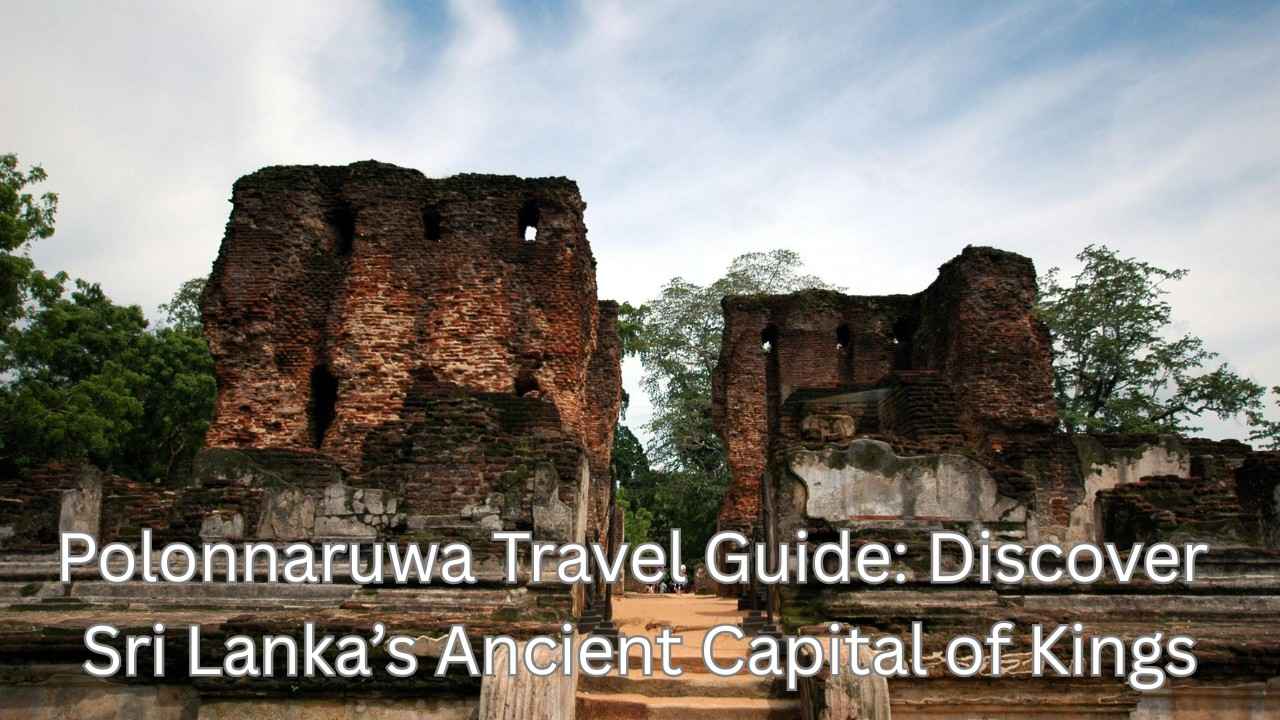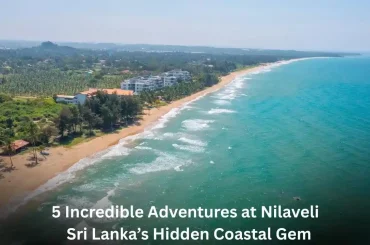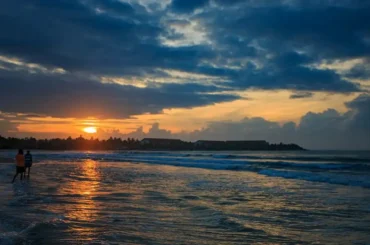Table of Contents
Introduction: Why Visit Polonnaruwa
Polonnaruwa, the second ancient capital of Sri Lanka, is one of Asia’s most impressive archaeological sites. Declared a UNESCO World Heritage Site, the city showcases the peak of medieval Sinhalese civilization.
Located in the North Central Province, it’s part of Sri Lanka’s Cultural Triangle — along with Sigiriya and Anuradhapura — and offers a perfect mix of history, architecture, and spirituality.
➡️Visit UNESCO – Ancient City of Polonnaruwa for official recognition details.
History of Polonnaruwa
The Rise of a Royal City
After the fall of Anuradhapura in the 10th century, King Vijayabahu I (1055–1110 AD) established Polonnaruwa as the capital. Later, under King Parakramabahu I (1153–1186 AD), the city entered its golden age — a time of vast construction, irrigation projects, and artistic brilliance.
“Not even a drop of rainwater should flow to the sea without serving man.”
— King Parakramabahu I
Decline and Rediscovery
By the 13th century, foreign invasions and political instability caused the city’s decline. The jungle reclaimed the ruins until rediscovered during the British colonial era.
Today, thanks to restoration, visitors can once again walk the streets of an ancient metropolis. Learn more at Britannica – Polonnaruwa.
Learn more at Britannica – Polonnaruwa.
Top Attraction In Polonnaruwa Travel Guide
Galviharaya
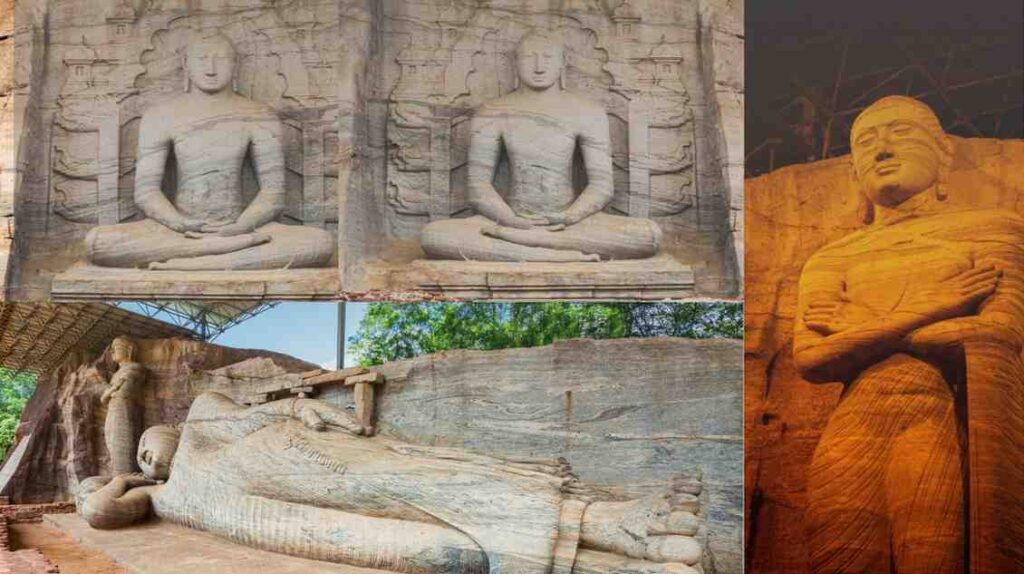
A highlight of any visit, this granite rock temple features four Buddha statues — seated, standing, and reclining — carved from a single rock. Their serenity and craftsmanship are unmatched.
The Sacred Quadrangle
Located in the city center, this compact area is home to:
- Vatadage – a circular relic house with stone guardstones
- Hatadage – built to enshrine the Tooth Relic
- Nissanka Lata Mandapaya – with uniquely curved stone columns
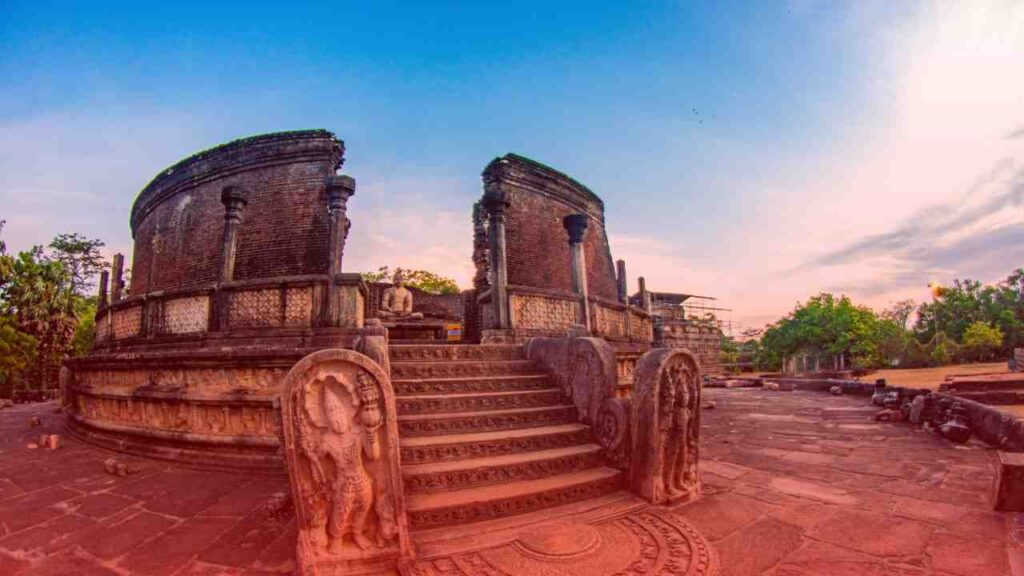
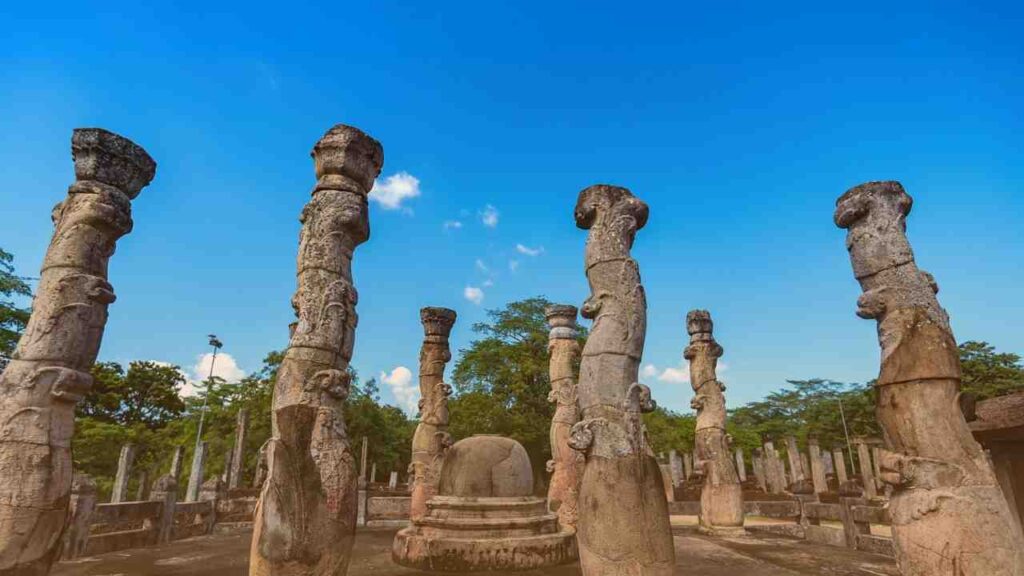
Other Notable Sites _ Polonnaruwa Travel Guide
- Rankoth Vehera – massive stupa similar to those in Anuradhapura
- Lankatilaka Image House – a towering brick shrine
- Royal Palace & Audience Hall – once home to King Parakramabahu
- Kiri Vehera – “Milk Stupa,” still in remarkable condition
Engineering Marvels & Urban Planning
Parakrama Samudra – “Sea of Parakrama”
This enormous reservoir covers over 22 square kilometers, serving both agriculture and city life. It remains one of Asia’s greatest feats of hydraulic engineering
Ancient Infrastructure
The city’s design incorporated:
- Irrigation canals and tanks (wewas)
- Dams and sluice gates
- Planned royal gardens and bathing ponds
- Residential zones and monastic complexes
Even today, you can admire the precision of ancient Sri Lankan engineering
♾️Learn more: Travel Map Sri Lanka
Travel Tips for Visiting Polonnaruwa
📅 Best time to visit
- May to September – Dry season, best weather for sightseeing
- Morning or late afternoon – Cooler temperatures and softer light
🚗 Getting There
- From Colombo: ~5–6 hours by road
- From Dambulla or Sigiriya: ~1.5–2 hours
- Transport options: Train, bus, private car, or tuk-tuk
👗Dress & Essentials
- Dress modestly (shoulders and knees covered)
- Remove shoes when entering temples
- Bring sunscreen, water, hat, and good walking shoes
📍Practical info: Sri Lanka Getaway – Ultimate Guide
Cultural Etiquette & Photography Tips
Respect Local Customs
- Never pose with your back to Buddha statues
- Avoid touching sacred relics
- Maintain silence inside shrines
Photo & Drone Tips
- Drones/tripods may require permission
- Best light: early morning & golden hour
- Use alt text (e.g., “Gal Vihara Buddha statue, Polonnaruwa”) for image SEO
Friendly local guides often share hidden insights and stories — engage respectfully.
See Twins on Toes – Polonnaruwa Guide
Itinerary Ideas & Hidden Gems
Suggested Itineraries-Polonnaruwa Travel Guide
1- Day tour
- Morning: Sacred Quadrangle, Gal Vihara
- Afternoon: Royal Palace, Parakrama Samudra sunset
2- Day tour
- Day 1: Main sites
- Day 2: Deepa Uyana Gardens, Pothgul Vehera, rural village lunch
Hidden Gems- Polonnaruwa Travel Guide
- Deepa Uyana (Royal Garden) – tranquil royal park
- Pothgul Vehera – ancient library ruins
- Local Villages – taste authentic Sri Lankan cuisine
Find more on Tours Lanka – Polonnaruwa Attractions
If you try more nearest places in Polonnaruwa find https://nalyxo.com/sigiriya-travel-guide-exploring-sri-lankas-lion-rock-fortress/
Conclusion
Polonnaruwa is more than a city of ruins — it’s a living legacy of Sri Lanka’s royal past.
From the peaceful faces of the Gal Vihara Buddhas to the vast Parakrama Samudra, every corner reveals a blend of spirituality, architecture, and innovation.
Whether you’re a history lover, photographer, or curious traveler, Polonnaruwa will leave you inspired by the timeless artistry of a lost kingdom.
How long should I spend exploring Polonnaruwa?
A full day is ideal to see the main sites. If you have two days, include nearby villages and lesser-known temples for a deeper experience.
What is the best way to explore Polonnaruwa’s ruins?
Cycling is the most popular and eco-friendly way. Many guesthouses and rental shops offer bikes. Tuk-tuks are also available for families or groups.
Is there an entrance fee for Polonnaruwa?
Yes, approximately USD 25–30 (subject to change). Tickets can be purchased at the Archaeological Museum entrance and cover all major monuments.


